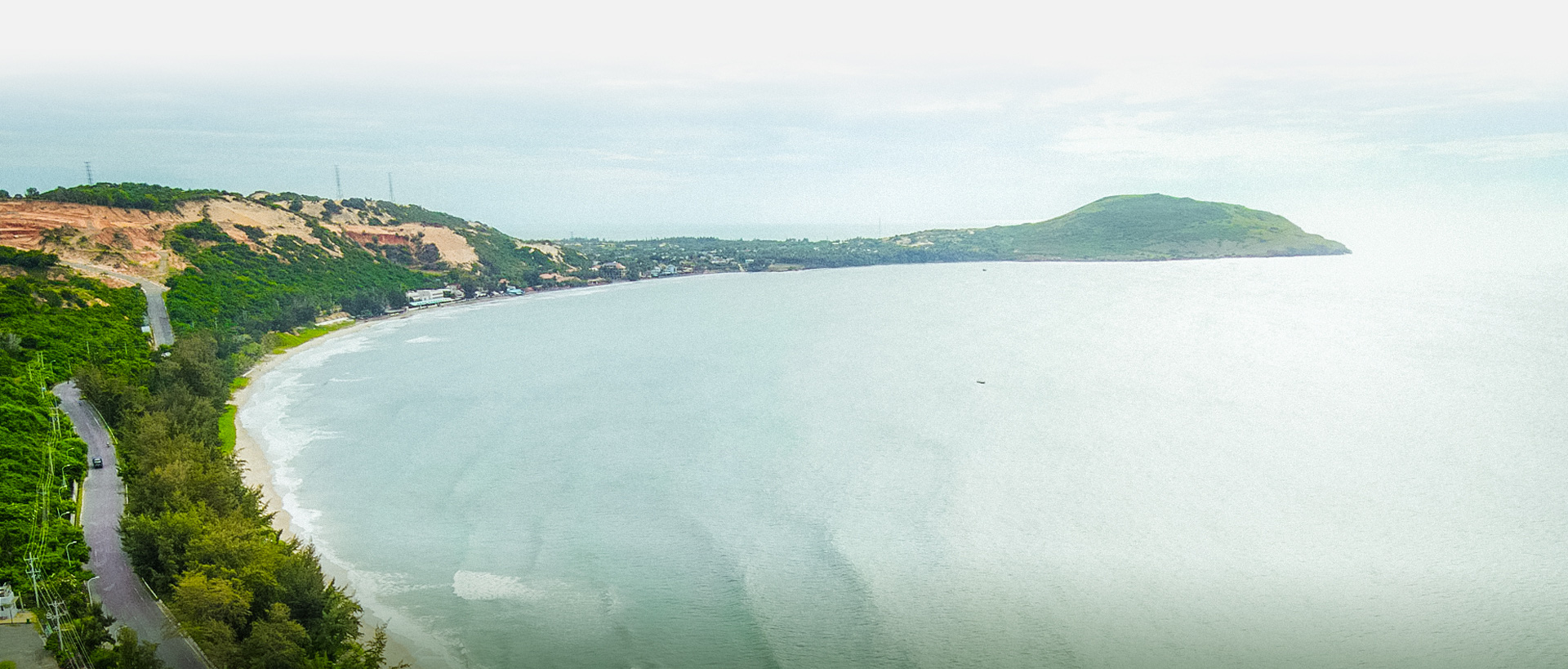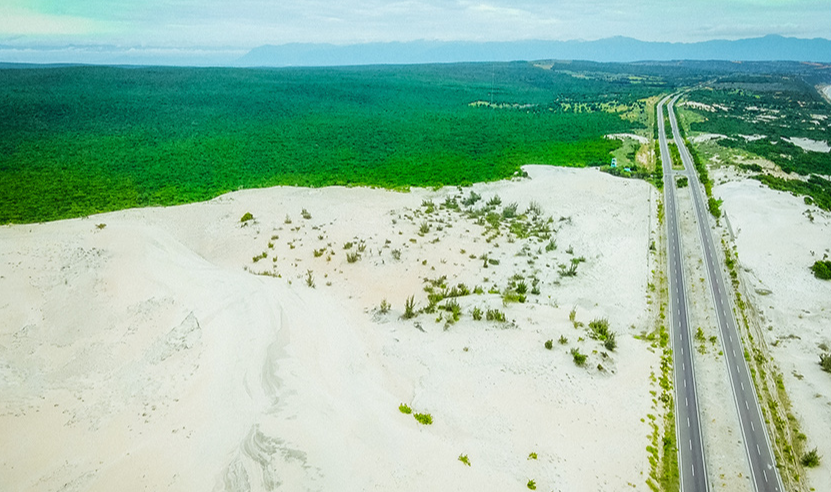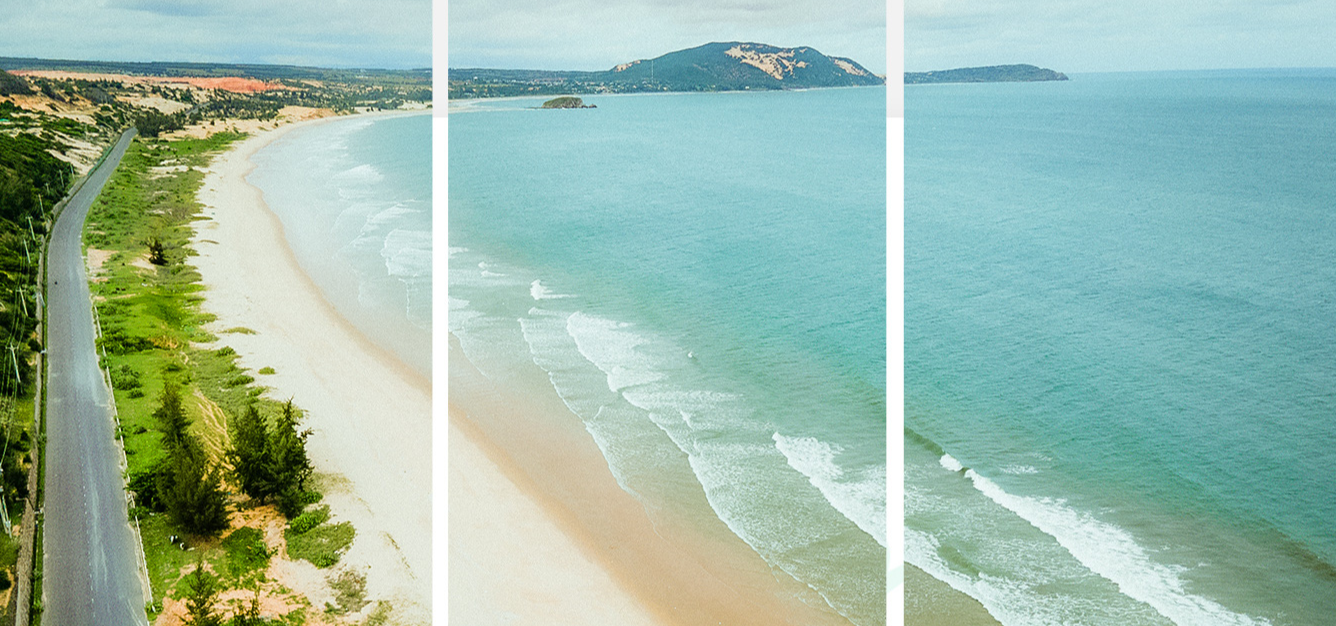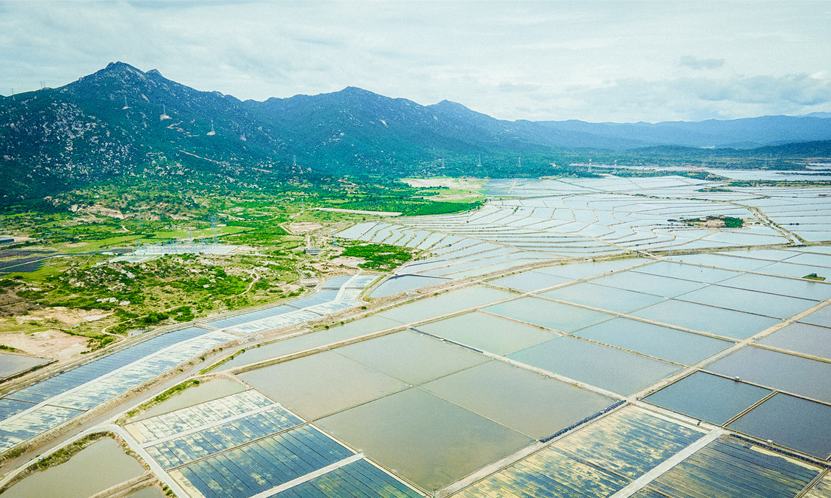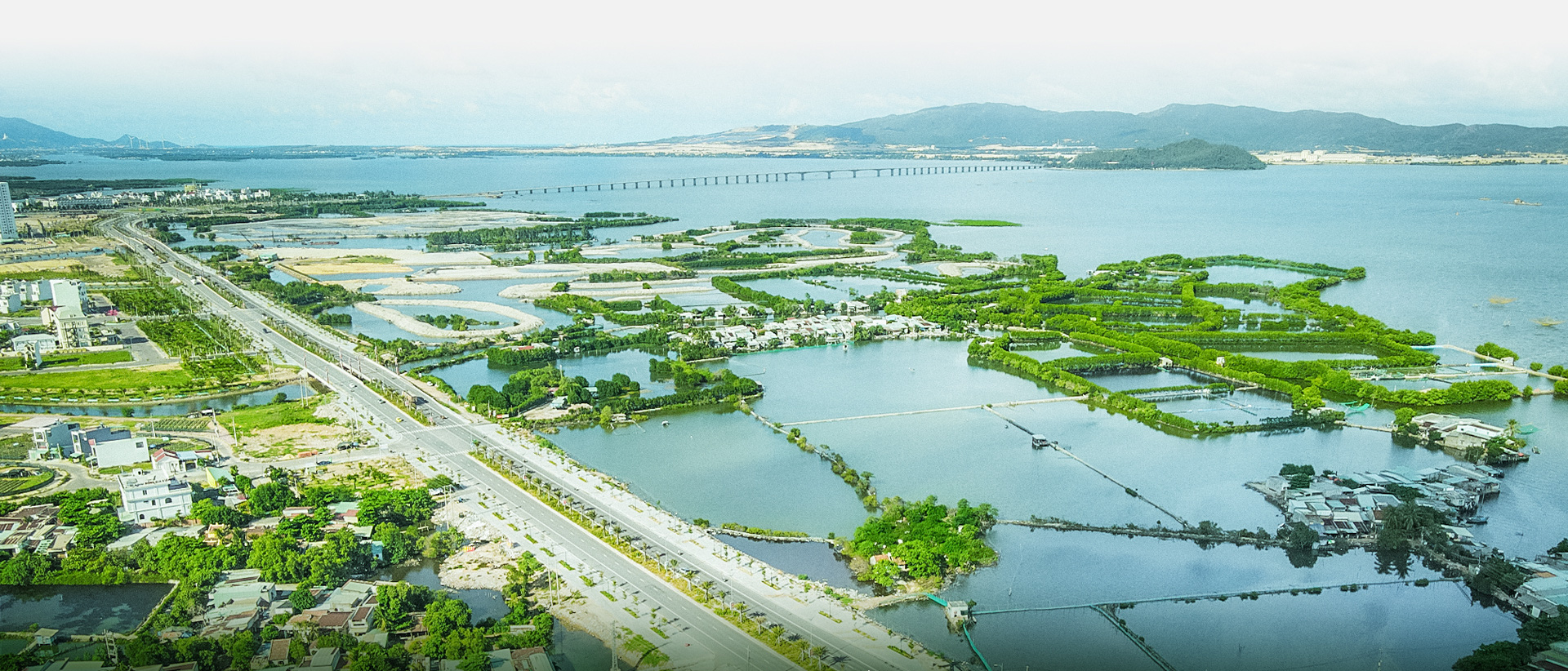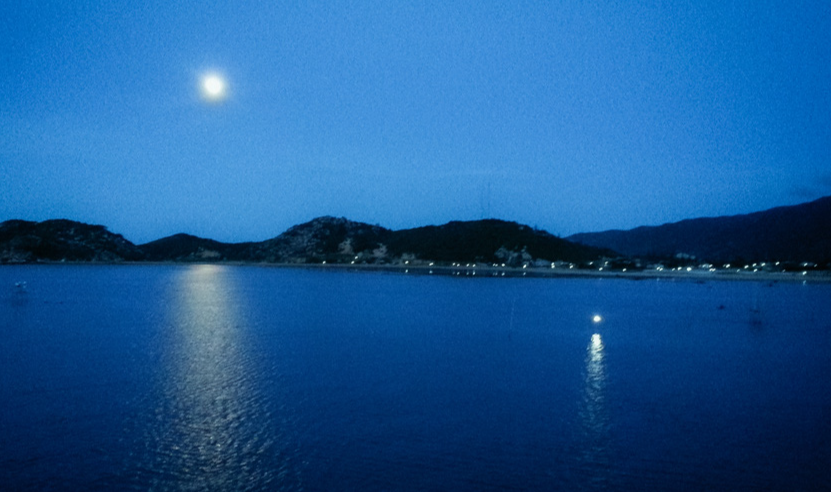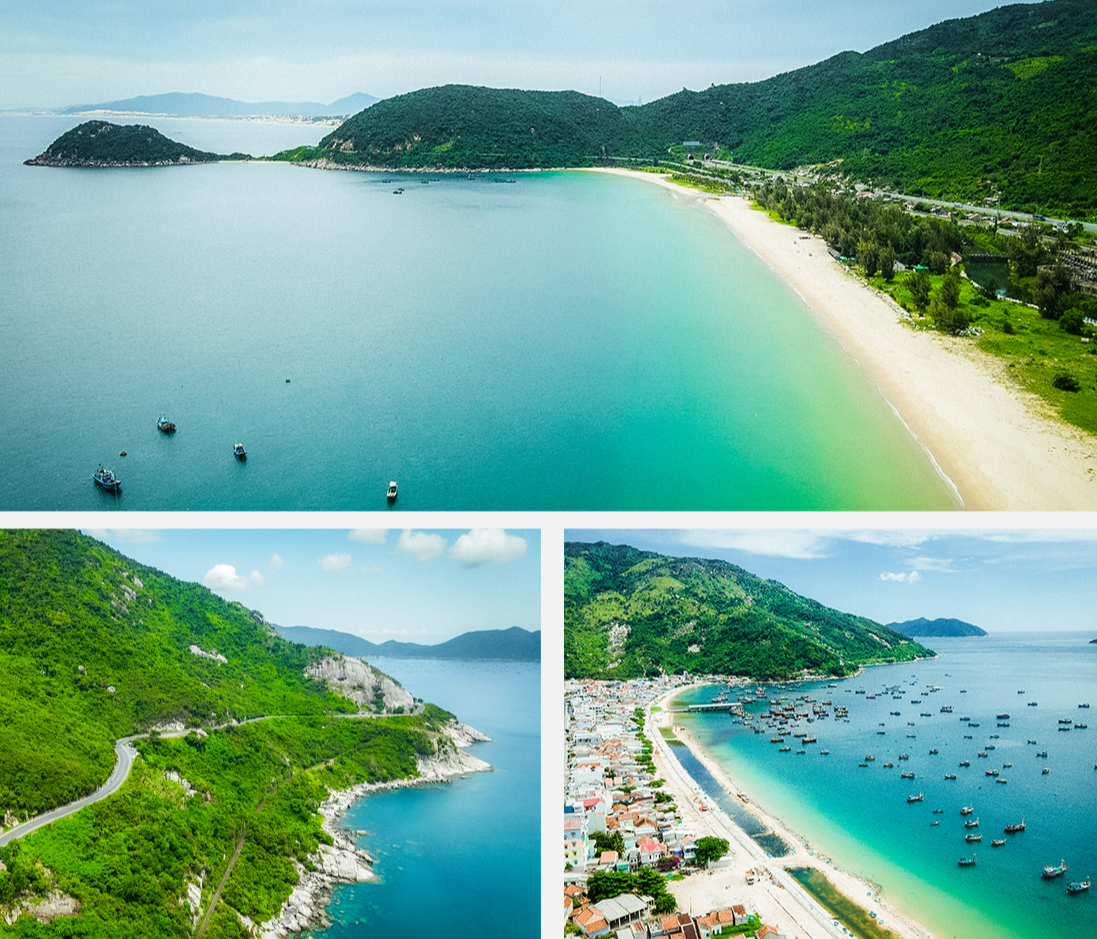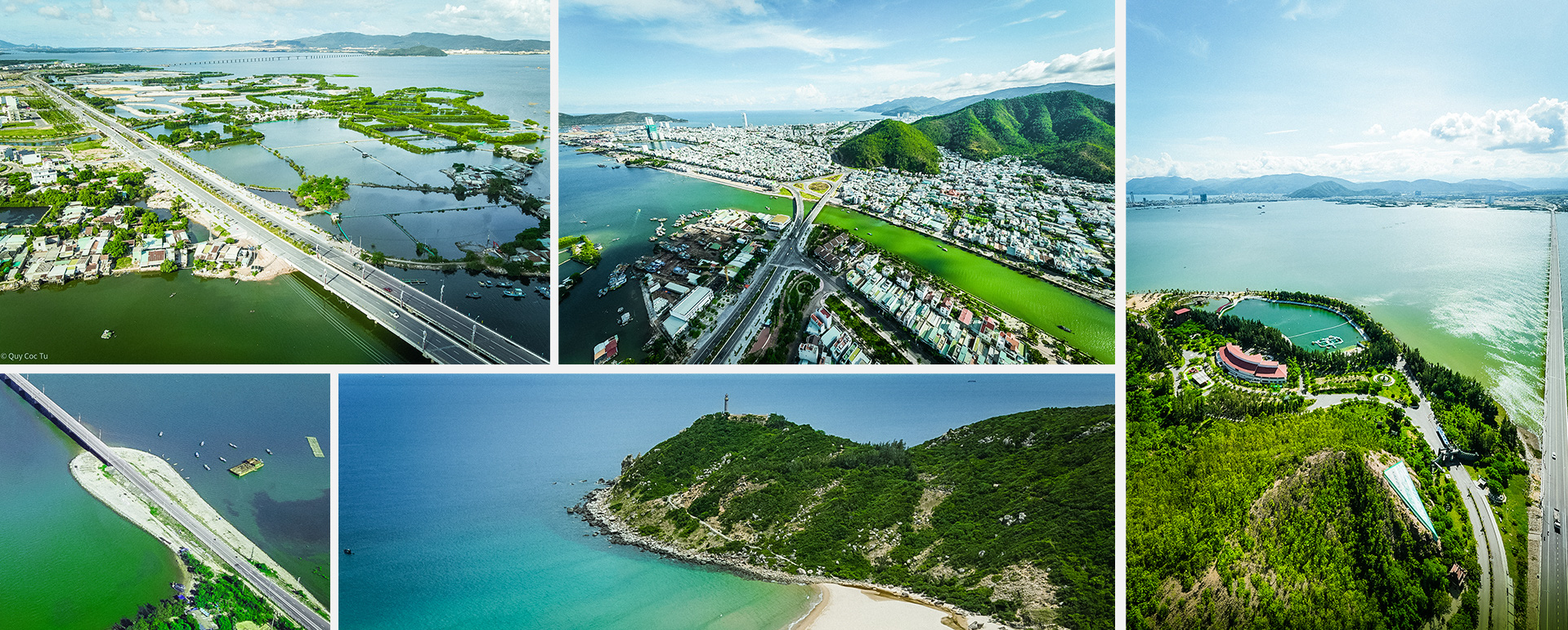This coastal route connecting five provinces in south-central Vietnam offers the perfect road trip for those who cannot get enough of the country’s breathtaking beaches.
The route, which starts from Binh Thuan and ends in Binh Dinh, also passes through Ninh Thuan, Khanh Hoa and Phu Yen – five provinces that are home to some of Vietnam’s most pristine beaches.
With the boundless ocean and its many shades of blue on one side and the chameleon-like terrains – shapeshifting between sand dunes, rocky mountains, forests, caves, and freshwater lakes – on the other, there is never a dull moment during the drive.
The spectacular 'Wild West'
Heading north from the White Sand Dunes in Binh Thuan, seasoned travelers swear by taking a detour via provincial road 716B toward Phan Ri Cua Town rather than taking the shorter National Highway 1.
The longer trip pays off with the thrill of crossing desert-like sand dunes and admiring the sheer scale of nature while standing atop the peaks.
In the absence of hustling traffic and surrounded by never-ending mountains of sand, at times the traveler feels like they are in a Western movie or lost in the vast deserts of southern Australia.
The winding roads only add to the reckoning of one’s smallness against nature’s backdrop.
Every now and then, a dragon fruit plantation pops up on one side of the street, adding a perfect swath of cacti green to the picture.
|
|
| A bird’s-eye view of the White Sand Dunes in Binh Thuan Province, Vietnam. Photo: Ngo Tran Hai An / Tuoi Tre |
A keen observer would notice that the beach is not static, as the color of its sand constantly switches between yellow, orange, brown, and cream along the perpetual coastline.
The only constant in the picture is the seductive azure sky, which remains mostly cloudless thanks to the region’s lack of rain, which is a perfect backdrop for social media photos.
Upon reaching Co Thach Beach in Tuy Phong District – about 100 kilometers from Phan Thiet – the provincial road 716B merges back into National Highway 1.
Another 30-minute drive would lead to Ca Na Beach – a lesser known gem nestled just south of the Binh Thuan-Ninh Thuan border.
The rugged beach gives off the vibe of a fisher lady – young, beautiful, and weathered by the wind, the waves, and the sun.
|
|
| A bird’s-eye view of Mui Ne in Binh Thuan Province, Vietnam. Photo: Ngo Tran Hai An / Tuoi Tre |
Ca Na is Vietnam’s saltiest natural beach, making even a five-minute drive across the area enough for salt to crystallize on one’s skin if left uncovered.
While some may find the experience slightly irritating, a more romantically inclined soul would describe the inconvenience as nature’s embrace – a subtle way of asking the traveler to linger for just a bit longer.
The landscape here is also sculpted for stunning bird's-eye photos and videos if one happens to bring along a camera drone.
Whether calm or turbulent from waves crashing onto its rocky coast, the moody beach captivates viewers with its spotless beauty from every angle.
‘Surreal’ Vinh Hy Bay
After making a much-needed stop in Phan Rang-Thap Cham City in Ninh Thuan to rehydrate after hours of being baked under the region’s infamous sun, the traveler continues on en route to Vinh Hy Bay.
It is not uncommon to spot tribes of goats grazing on barren land on either side of the road or, if one is lucky, catch a close-up view of a herd of sheep crossing the street for Instagrammable photos.
Dragon fruit plantations are also replaced with acres of eye-pleasing vineyards – grapes are one of the rare species that thrive in the region’s aridity and are the livelihood of many local families.
As Vinh Hy Bay opens up before the eye, the beholder is treated to a view beyond anything they have ever imagined.
They are overcome by admiration for nature’s ingenious creation and arrangement: piles of rocks scattered over the jade-colored water, distinct yet inseparable from one another.
The curves and turns reveal one stunning view after another, as if it were embarrassed about having its charm explored all at once.
|
|
| A bird’s-eye view of Ninh Thuan Province, Vietnam. Photo: Ngo Tran Hai An / Tuoi Tre |
Many flattering adjectives have been used to describe Vinh Hy Bay, but the most expressive comparison must be one that likens the attraction to a 'surreal place.'
That is not an exaggeration. Here and there, rock formations are so peculiar they might be mistaken for the surface of an extraterrestrial planet.
Not far from the bay is Nui Chua National Park, home to Vietnam’s largest lowland dry forest with unique biodiversity values that further mystify the out-of-this-world area.
A fleet of boats from a local fishing village add a touch of life to the picture.
The closer one gets to Cam Ranh, the more lobster farming rafts begin to populate the ocean surface.
Those seeking a break from sightseeing can visit one of these rafts and explore the day-to-day lives of locals while feasting on fresh seafood.
Tourists can also board one of the local boats and be taken to the open water for a private diving experience where they can explore over 300 species of coral – 50 of which are endemic to Vietnam.
|
|
| A bird’s-eye view of Cam Ranh City in Khanh Hoa Province, Vietnam. Photo: Ngo Tran Hai An / Tuoi Tre |
Passing Nha Trang City, the road leads on to Van Phong Bay in Khanh Hoa Province before seamlessly crossing the border into Phu Yen Province, home to Vung Ro Bay and Dien Cape.
Depending on the time of the year, the cape can be the first place in mainland Vietnam to catch the day’s first ray of sun.
Here stands one of Vietnam’s oldest lighthouses, towering over a beach perfect for an overnight camping experience for those interested in sunrise watching.
Pickier travelers can continue on the coastal road to visit other alluring attractions such as the Da Dia Reef, Yen Reef, Den Reef, Ong Reef, Bai Xep Beach, and O Loan Lagoon.
Crossing into Binh Dinh Province, travelers continue to be charmed by Thi Nai Bridge, Eo Gio Strait, and Ky Co Beach.
|
|
| Bird’s-eye views of the Trung Luong rocky beach located near the provincial road 639 in Phu Cat District, Binh Dinh Province, Vietnam. Photo: Ngo Tran Hai An / Tuoi Tre |
They say a person can never visit Vietnam’s south-central coast the same way twice. Each trip is promised to offer the traveler a unique experience and expose them to a different side of the region’s splendor.
If anyone is to visit this area on full-moon nights, be prepared to have their breath taken away by the enchanting moon-lit sea.
|
|
| A full moon rises over the ocean in Phu Yen Province, Vietnam. Photo: Dao Kim Trang / Tuoi Tre |
As the moon rises from the far east over the water, a streak of golden light stretches from the skyline all the way into shore, resembling a ribbon of sparkling silk laid across the borderless ocean.
All earthly creatures seem to pause for a moment to bathe their soul in nature’s purifying light and admire the magical phenomenon.
|
|
| Bird’s-eye views of Vung Ro Bay in Phu Yen Province, Vietnam. Photo: Ngo Tran Hai An / Tuoi Tre |
As the moon rises higher, the silk ribbon gets shorter and shorter until it is reduced to a circular reflection of its glowing subject.
The two moons, nearly 385,000 kilometers apart, come alive like two close friends celebrating their long-awaited reunion.
Many photographers have waited hours to capture the moon’s transformation over the ocean.
“People will have moments like these forever engraved in their memory,” said Dao Kim Trang, an excursionist who has led numerous groups of photographers on 'moon-hunting' trips.
“It’s a bottomless source of energy for every individual.
"Being in the presence of such a scene inspires people to cherish their hometown and country."
|
|
| Bird’s-eye views of Quy Nhon City in Binh Dinh Province, Vietnam. Photo: Ngo Tran Hai An / Tuoi Tre |
Like us on Facebook or follow us on Twitter to get the latest news about Vietnam!



